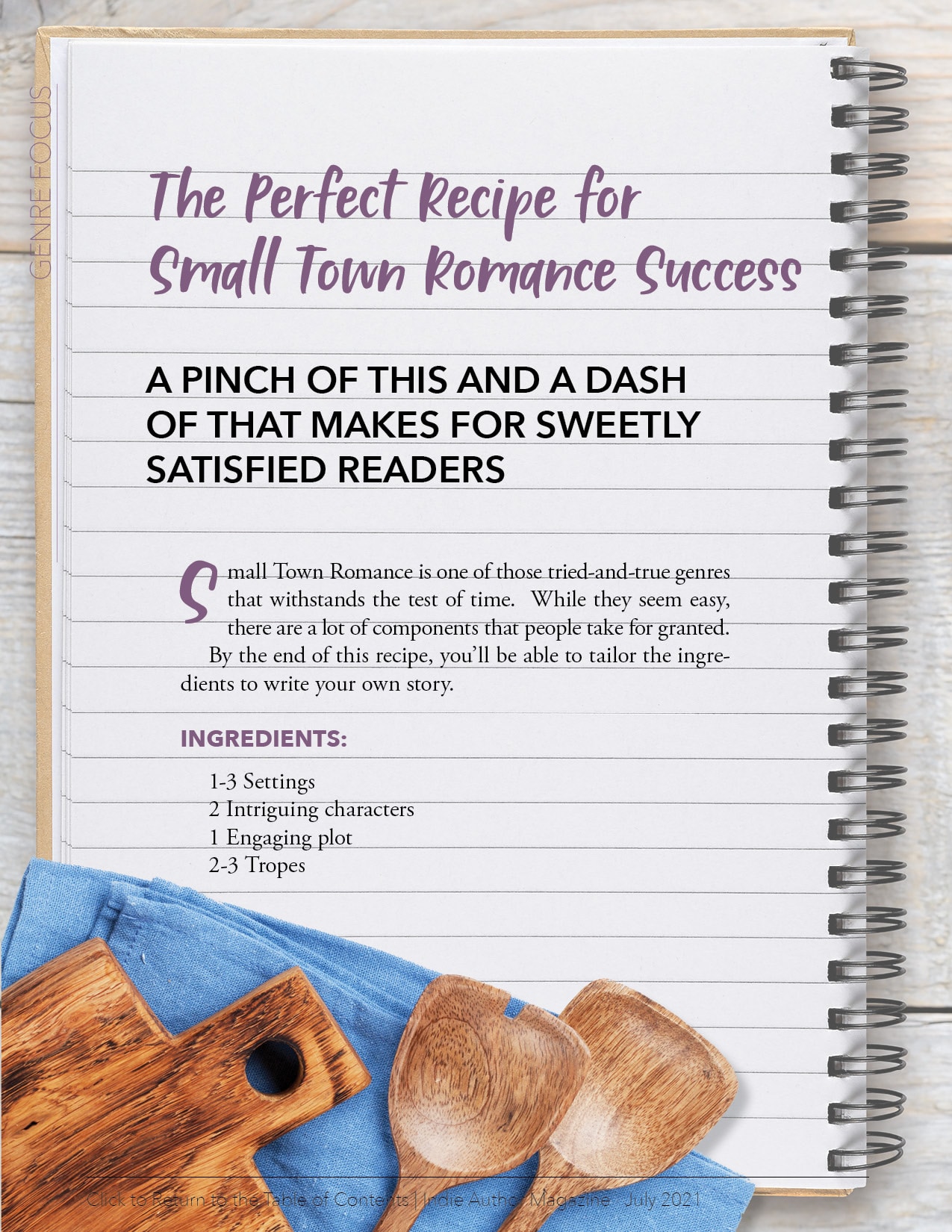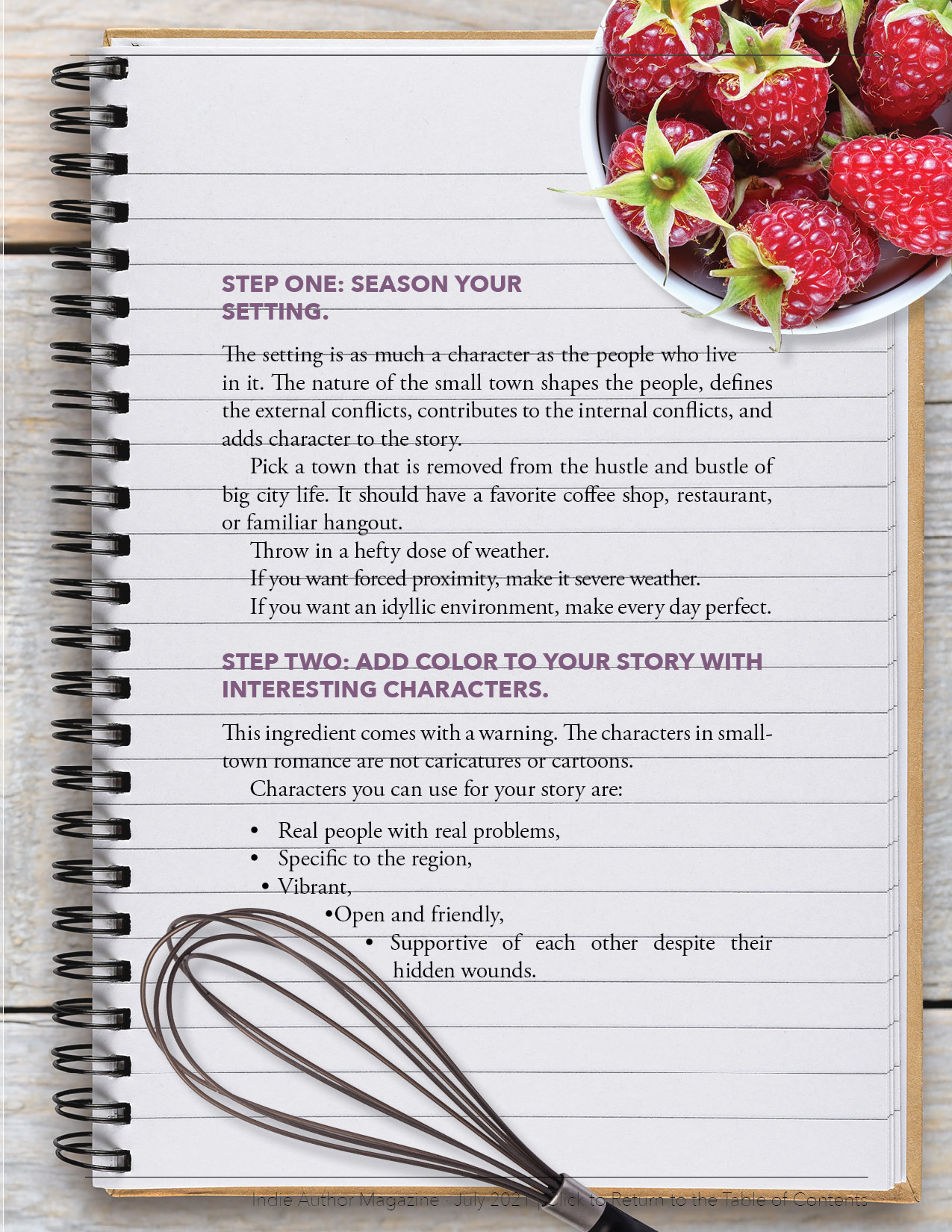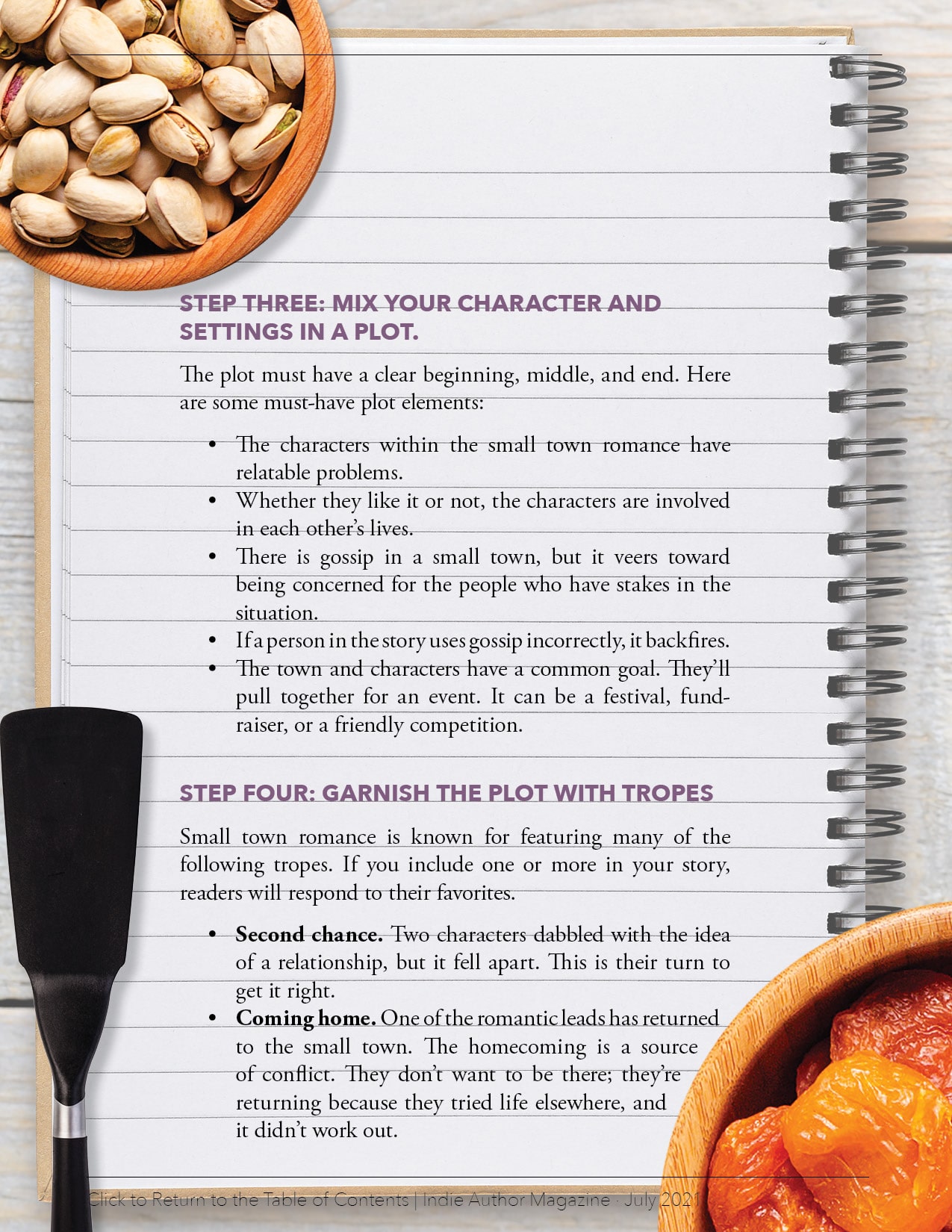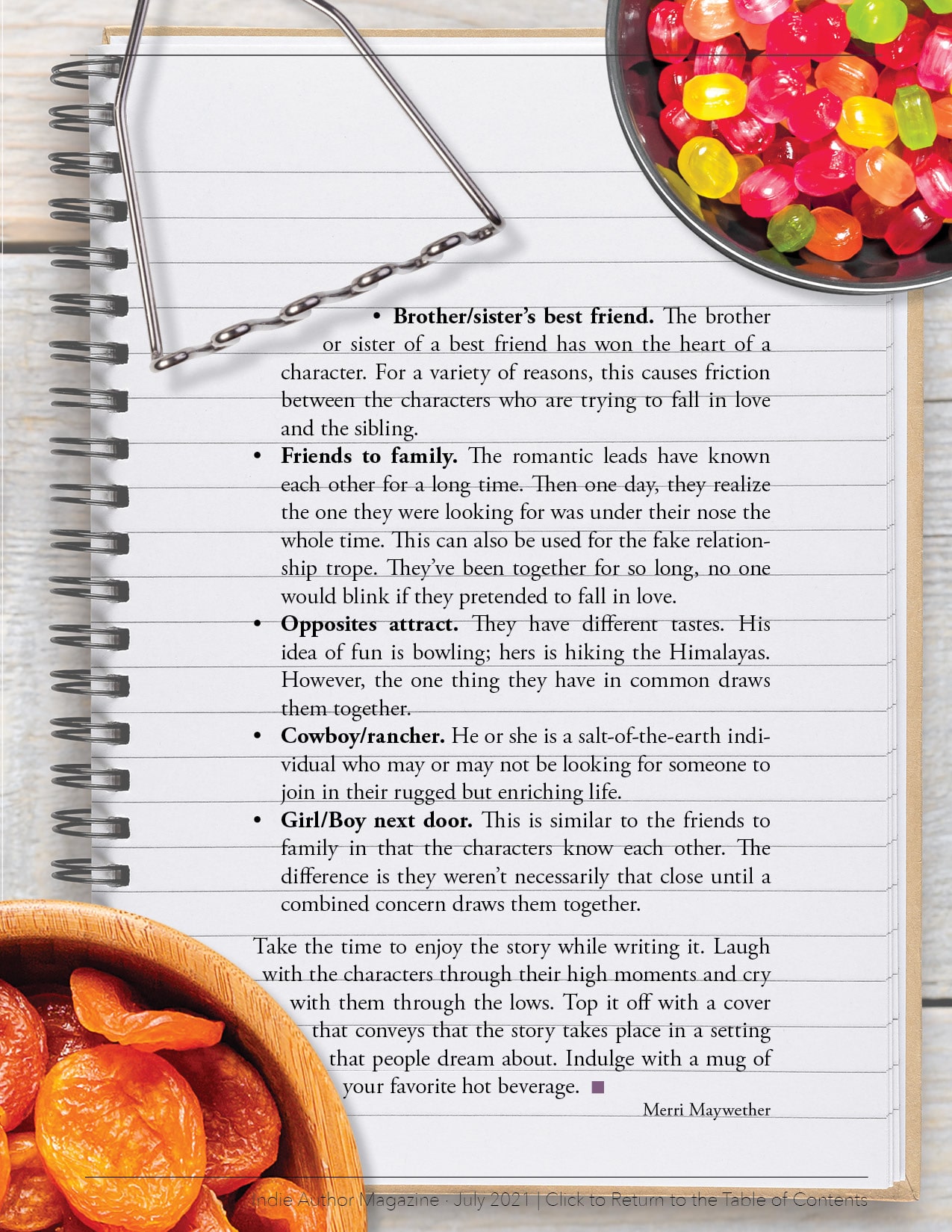A pinch of this and a dash of that makes for sweetly satisfied readers
Small Town Romance is one of those tried-and-true genres that withstands the test of time. While they seem easy, there are a lot of components that people take for granted.
By the end of this recipe, you’ll be able to tailor the ingredients to write your own story.
Ingredients:
1-3 Settings
2 Intriguing characters
1 Engaging plot
2-3 Tropes
Step One: Season your setting.
The setting is as much a character as the people who live in it. The nature of the small town shapes the people, defines the external conflicts, contributes to the internal conflicts, and adds character to the story.
Pick a town that is removed from the hustle and bustle of big city life. It should have a favorite coffee shop, restaurant, familiar hangout.
Throw in a hefty dose of weather.
If you want forced proximity, make it severe weather.
If you want an idyllic environment, make every day perfect.
Step Two: Add color to your story with interesting characters.
This ingredient comes with a warning. The characters in small-town romance are not caricatures or cartoons.
Characters you can use for your story are:
- Real people with real problems,
- Specific to the region,
- Vibrant,
- Open and friendly,
- Supportive of each other despite their hidden wounds.
Step Three: Mix your character and settings in a plot.
The plot must have a clear beginning, middle, and end. Here are some must-have plot elements:
- The characters within the small town romance have relatable problems.
- Whether they like it or not, the characters are involved in each other’s lives.
- There is gossip in a small town, but it veers toward being concerned for the people who have stakes in the situation.
- If a person in the story uses gossip incorrectly, it backfires.
- The town and characters have a common goal. They’ll pull together for an event. It can be a festival, fundraiser, or a friendly competition.
Step Four: Garnish the plot with tropes
Small town romance is known for featuring many of the following tropes. If you include one or more in your story, readers will respond to their favorites.
- Second chance. Two characters dabbled with the idea of a relationship, but it fell apart. This is their turn to get it right.
- Coming home. One of the romantic leads has returned to the small town. The homecoming is a source of conflict. They don’t want to be there; they’re returning because they tried life elsewhere, and it didn’t work out.
- Brother/sister’s best friend. The brother or sister of a best friend has won the heart of a character. For a variety of reasons, this causes friction between the characters who are trying to fall in love and the sibling.
- Friends to family. The romantic leads have known each other for a long time. Then one day, they realize the one they were looking for was under their nose the whole time. This can also be used for the fake relationship trope. They’ve been together for so long, no one would blink if they pretended to fall in love.
- Opposites attract. They have different tastes. His idea of fun is bowling; hers is hiking the Himalayas. However, the one thing they have in common draws them together.
- Cowboy/rancher. He or she is a salt-of-the-earth individual who may or may not be looking for someone to join in their rugged but enriching life.
- Girl/Boy next door. This is similar to the friends to family in that the characters know each other. The difference is they weren’t necessarily that close until a combined concern draws them together.
Take the time to enjoy the story while writing it. Laugh with the characters through their high moments and cry with them through the lows. Top it off with a cover that conveys that the story takes place in a setting that people dream about. Indulge with a mug of your favorite hot beverage.




